Results 8,071 to 8,080 of 12091
Thread: Anandtech News
-
04-26-18, 03:06 PM #8071
Anandtech: Philips Unveils 43-Inch 4K Gaming LCD with DisplayHDR 1000, DCI-P3, FreeSy
Philips has announced its new large gaming display that brings together an ultra-high-definition resolution panel, VESA’s DisplayHDR 1000 certification, and AMD’s FreeSync dynamic refresh rate technology. In addition to being the only ultra-large gaming monitor to support the aforementioned features (among those announced to date), the Philips 436M6VBPAB also supports USB Type-C docking, which is going to please users of laptops that feature only USB-C ports.
A Gaming Display with Quantum Dots, Ambiglow, and a Remote
The Philips 436M6VBPAB relies on a 43-inch 8-bit + FRC VA panel featuring a 3840×2160 resolution, 600 – 1000 nits brightness, a high contrast ratio (since it is a VA panel, we are probably talking about something like 2000:1 or better), a 4 ms response time, a 60 Hz refresh rate, 178°/178° viewing angles, and so on. The backlighting is outfitted with a Quantum Dot-enhancement film that enables it to cover an above-average 97.6% of the DCI-P3 color gamut.
In addition to accurate colors and HDR support, the 436M6VBPAB supports Philips' Ambiglow technology, which produces LED lighting effects to match ambient lighting with what is happening on the screen. This is not a programmable RGB lighting found on gaming displays from companies like ASUS, but it adds visual effects that are useful practically and bring additional immersion to games.
Speaking of gaming, it is noteworthy that the ultra-large monitor from Philips takes a page from AOC’s book and supports the so-called Low Input Lag mode that reduces input lag by bypassing “most of the display’s internal processing." This is not particularly surprising since both AOC- and Philips-branded LCDs are made by TPV.
Moving on to connectivity of the 436M6VBPAB. The monitor has four display inputs: 1x DisplayPort 1.2, 1x Mini DisplayPort 1.2, 1x HDMI 2.0, and 1x USB Type-C that can be used both for display connectivity and as an upstream port for a USB 3.0 hub. The LCD supports Picture-in-Picture and Picture-by-Picture capabilities from two sources. As for audio, the display features a 3.5-mm audio input, 3.5-mm audio output as well as two built-in 7-W speakers with the DTS Sound badge.
Another important feature of the Philips 436M6VBPAB monitor is bundled remote controller that can be used to control the monitor as well as other devices connected using HDMI (e.g., media players, game consoles, etc.). The remote is going to be quite handy because the 43-incher can be used like a TV when connected to various media streamers or players (or even a TV tuner!). Now, a disadvantage of this size is that the 436M6VBPAB does not come with a stand that can regulate its height or tilt. To partly solve this, it does have VESA mounts.
FreeSync Meets HDR
The new monitor from Philips belongs to the brand’s Momentum lineup of LCDs aimed at gamers and multimedia enthusiasts. Given the target market, the key features of the Philips 436M6VBPAB besides its dimensions and Quantum Dot-enhanced backlighting are AMD’s FreeSync technology and VESA’s DisplayHDR 1000 badge, a rather odd combination considering the fact that FreeSync 2 is a technology that is supposed to bring HDR to gaming displays. There is an explanation to this combination.
AMD’s FreeSync 2 mandates monitors to support a number of features: they have to support the tech on the logical level (i.e., let games tone map directly to the native color space of a display), they have to cover at least 90% of the DCI-P3 color space, and they have to support a dynamic refresh rate with Low Framerate Compensation. In case of the 436M6VBPAB, the LCD supports a wide color gamut and a dynamic refresh, but not direct tone mapping and LFC, which is why it cannot get an appropriate AMD certification. In fact, it yet has to get a FreeSync certification, which is why Philips uses the term ‘Adaptive Sync for AMD GPUs’. Philips does not disclose dynamic refresh range of the monitor, but given its maximum refresh rate, we don't expect the minimum refresh rate to be much below 45Hz.
As for the DisplayHDR 1000 logo, the VESA's highest HDR has a rather strict requirements for brightness (600 nits full-screen long duration minimum, 1000 nits full-screen flash minimum) and black levels. The VESA does not mandate local dimming for this standard, yet it does not believe that corner maximum limit of 0.05 nits and tunnel maximum limit of 0.1 nits are achievable without local dimming. That said, while the Philips 436M6VBPAB does not support FALD (full array local dimming), it does support some kind of local dimming and therefore should feature a good contrast ratio.
Gallery: Philips Unveils 43-Inch 4K Gaming LCD with DisplayHDR 1000, DCI-P3, FreeSyncThe Philips 436M6VBPAB General Specifications Panel 43" VA Native Resolution 3840 × 2160 Maximum Refresh Rate 60 Hz Response Time 4 ms GtG Brightness 600 cd/m² (full-screen long duration minimum)
1000 cd/m² (peak)Contrast 2000:1 (?) Backlighting LED with quantum dots Viewing Angles 178°/178° horizontal/vertical Aspect Ratio 16:9 Color Gamut 100% sRGB/BT.709
97.6% DCI-P3HDR HDR10 DisplayHDR Tier 1000 Dynamic Refresh Rate Tech AMD FreeSync Pixel Pitch 0.2479 mm² Pixel Density 102 PPI Inputs 1 × DisplayPort 1.2
1 × Mini DisplayPort 1.2
1 × HDMI 2.0
1 × USB Type-CAudio 3.5 mm input/output
2 × 7 W DTS Sound speakersUSB Hub ? × USB 3.0 Type-A connectors
1 × USB 3.0 Type-C inputVESA Mount 200 × 200 mm MSRP Europe: €799
UK: £699
US: $799 without VAT (unconfirmed)





Pricing and Availability
Philips plans to start selling the 436M6VBPAB this May for €799/£699 in Europe. As production of the unit ramps up, its availability will get more widespread in June, but the manufacturer does not explicitly say when it plans to start its sales in the U.S.
Related Reading:
- BenQ Unveils EX3203R 32-inch Curved LCD with FreeSync 2, DCI-P3, & USB-C
- AOC Announces AGON AG322QC4 32-Inch Curved LCD with FreeSync 2 & DisplayHDR 400
- Samsung Announces First Freesync 2 Monitors: CHG70 & CHG90 - Quantum Dots, Up to 49”, 144 Hz, DCI-P3
- AMD Announces FreeSync 2: Easier & Lower Latency HDR Gaming
- Microsoft and AMD to Bring FreeSync 2 Support to Xbox One S and Xbox One X This Spring
- Philips Readies Curved Ultra-Wide 492P8 Display: 49”, 32:9, USB-C, Sub-$1100
- Philips Preps 328P6AU and 328P6VU: 31.5” Professional LCDs with QHD, UHD, HDR, USB-C
- Philips Demos 328P8K: 8K UHD LCD with Webcam, Docking, Coming in 2018
More...
-
04-26-18, 04:38 PM #8072
Anandtech: Intel Outs Z390 & X399 PCHs for Cannon Lake & Coffee Lake CPUs
Intel this week released its new Rapid Storage Technologies drivers, and thanks to their associated release notes, Intel has indirectly confirmed their upcoming Z390 and X399 PCHs. The drivers' release notes also shed some light on Intel’s 9th Generation Core processors as well as features of Intel’s future HEDT platform.
Intel’s new and upcoming platforms for desktops and workstations rely on the company’s Cannon Point-H (CNP-H) PCH silicon in various configurations and with various differentiators, according to release notes for the Intel RST version 16.0 driver. The CNP-H chip itself is already in high volume production and is sold to PC makers under the CM246, HM370, QM370, H370, H310, Q370, and B360 SKUs. Said chipsets power high-performance laptops based on mobile Coffee Lake processors as well as new motherboards for consumer and corporate desktops. Going forward, Intel’s Cannon Point-H PCH will also be used for various desktops (under the Z390, H310, H370, Q370, Q360, B360 model numbers), workstations (under the C246 model number), and high-end desktops (under the X399 SKU).
It is noteworthy that the Intel X399 PCH will be validated only with the Skylake-X CPUs (at least initially), leaving the unusual Kaby Lake-X family notably absent. It remains to be seen whether Intel plans to rebrand Skylake-X processors for the X399 platform in a bid to emphasize possible new features of the platform, but typically the company does not do anything like this in the HEDT segment.
Intel’s upcoming low-power laptop platforms running the 9th Generation Core "Cannon Lake-U" SoCs will use a different PCH known as the Cannon Point-LP. The document does not say anything about usage of non-Cannon Lake silicon in the 9th Gen Core family for low-power notebooks, so it looks like the said platforms will rely solely on Intel’s CPUs made using its 10 nm process technology. At the same time, it is also noteworthy that Intel does not list any Cannon Lake-Y SoCs in the release notes, so the destiny of such products remains unknown.
Since release notes for the drivers are not meant to announce precise product specifications, it is impossible to say what exactly to expect from the Z390 or the X399 PCHs. Meanwhile, general specs of the Q370, H370 SKUs and other PCHs based on the CNP-H silicon are well known, so the base functionality of the upcoming chipsets is more or less obviousIntel's 300-Series and 240-Series PCHs Chipset SKU Silicon Supported CPUs Application Z390 Cannon Point-H
CNP-HCannon Lake
Coffee Lake-SEnthusiast Desktops H370 Desktops H310 Q370 Q360 B360 C246 Workstations CM246 Cannon Lake
Coffee Lake-HMobile Workstations QM370 High-End Laptops HM370 X399 Skylake-X High-End Desktops 9th Gen Core Platform I/O Controller Cannon Point-LP
CNP-LPCannon Point-U Low-Power Laptops
Intel does not comment on unreleased products, so we cannot get you any official information at this point.Intel's 300-series PCH Z370 H370 Q370 B360 H310 Launch Oct '17 Apr '18 Apr '18 Apr '18 Apr '18 Market Consumer
-Consumer
Corporate-
CorporateConsumer
CorporateConsumer
-ME Firmware 11 12 12 12 12 HSIO Lanes 30 30 30 24 14 Total USB 14 14 14 12 10 Max USB 3.1 G2 - 4 6 4 0 Max USB 3.1 G1 10 10 8 6 4 SATA 6 Gbps 6 6 6 6 4 PCH PCIe 3.0 Lanes 24 20 24 12 - PCH PCIe 2.0 Lanes - - - - 6 Max RST PCIe Storage 3 2 3 1 0 Supports Optane Y Y Y Y N Integrated 802.11ac N Y Y Y Y Intel Smart Sound Y Y Y Y N Intel vPro N N Y N N TDP 6 W 6 W 6 W 6 W 6 W
Related Reading:
- Intel's 10nm Briefly Appears: Dual Core Cannon Lake in Official Documents
- Intel Documents Point to AVX-512 Support for Cannon Lake Consumer CPUs
- Intel Officially Reveals Post-8th Generation Core Architecture Code Name: Ice Lake, Built on 10nm+
- Intel 8th Generation and 9th Generation Processor Lists Leaked: Coffee Lake Refresh?
More...
-
04-27-18, 01:53 AM #8073
Anandtech: Intel Announces Q1 FY 2018 Results: Another Record
This afternoon, Intel announced their earnings for the first quarter of their 2018 fiscal year, and once again, the company has set new records, with revenue for the quarter of $16.1 billion, up 9% from a year ago. Intel is always a company built on strong margins, and although they were down 1.3% from last year, at 60.6% they are still quite strong. Operating income was up 23% to $4.5 billion, and net income was up 50% to $4.5 billion, which is the same as their operating income because they had gains on equity of $643 million, and they paid only 11.1% in taxes for the quarter. Earnings per share came in at $0.93, up 53%.
With numbers like that, it shouldn’t be a surprise that all of Intel’s business units improved their revenue year-over-year, including the Client Computing Group, which had revenues of $8.2 billion for the quarter, which was up 3%. It’s not a huge gain, but in a shrinking PC market, and stronger competition, they were able to scratch out some growth.
Ryan’s going to go more into this in another piece, but Intel also made it official that they are not going to have any volume shipments of 10 nm until 2019. Intel is currently shipping low-volume on 10 nm, but continued struggles in getting the new process up to speed mean that any 10 nm products that were in the works are now going to be delayed again. Intel is going to continue to improve their 14 nm node for this year.Intel Q1 2018 Financial Results (GAAP) Q1'2018 Q4'2017 Q1'2017 Revenue $16.1B $17.1B $14.8B Operating Income $4.5B $5.4B $4.5B Net Income $4.5B -$0.7B $3.0B Gross Margin 60.6% 63.1% 61.9% Client Computing Group Revenue $9.0B -8.9% +3% Data Center Group Revenue $5.2B -4.4% +24% Internet of Things Revenue $840M +3.5% +17% Non-Volatile Memory Solutions Group $1B +12.5% +20% Programmable Solutions Group $498M -12.3% +17%
Intel classifies the Client Computing Group as “PC-Centric” and you can see that it’s still the bread and butter of their revenue, but it’s also been stagnant for a while. They classify all of their other business as “Data-Centric” which includes the Data Center Group, IoT group, Non-Volatile Storage, Programable Solutions Group. This Data-Centric aspect is why Intel is growing again.
The Data Center Group had revenues of $5.2 billion, which is up 24% year-over-year. As we saw in AMD’s earnings, EPYC hasn’t really made an impact on their earnings yet, but Intel continues to dominate in this segment.
IoT is closing in on the billion-dollar revenue for a quarter, with growth of 17% year-over-year to $840 million. Although Intel missed out on mobile, IoT has the potential to quickly surpass mobile, and they’ve committed to this space early, and are seeing strong growth.
Non-Volatile Memory Solutions, which is Intel’s NAND flash and Optane group, had revenues of $1.0 billion for the quarter, which is up 20% year-over-year. They’ve focused a lot on the datacenter with their solutions, and there is higher margins there, so it’s not a surprise to see them focus in on that market.
Programmable Solutions had revenues of $498 million for the quarter, up 17% year-over-year. This is another strong growth segment for Intel, and we’ve seen a lot of the cloud infrastructure trying to find ways to offload work onto FPGAs in an attempt for more efficient workloads.
Thanks to the strong start, Intel has already raised their full-year expectations to $67.5 billion, which is an increase of $2.5 billion over their last forecast. Intel has traditionally led with their fabs, so it’s interesting to see them growing with such vigour when their fabs advances are completely stalled, but such is the growth of cloud computing.
Source: Intel Investor Relations
More...
-
04-27-18, 10:30 AM #8074
Anandtech: Bykski Announces Real-Time Temperature Monitoring Fittings for Watercoolin
Bykski has unveiled two new real-time temperature sensor monitors, both featuring LCD displays capable of displaying real-time temperature information on its screen to the users. The Bykski B-TME-SE-AL and B-VGA-SC-AL both are added inline to your water cooling loop to allow for instant monitoring of the water loop fluid temperature right from its screen. Aside from temperature monitoring, it can add a unique touch to a user's loop. Typically temperature readings are handled by software or much larger devices that fit in the 5 1/4" bays.
The B-TME-SE-AL is an inline device designed for use on the main loop tubing and features an OLED display showing real-time temperature information. It is able to get this information through a thermistor in the inlet screw which reads the liquids current temperature when passing through the device. Users are able to present the information in a curve display or progress bar on the screen. The TME is constructed of aircraft-grade aluminum and is available in black and grey colors with a smooth finish.
The B-VGA-SC-AL, on the other hand, is intended for use with VGA blocks and mounts to the VGA block itself. Like the TME, the VGA version works the same way with an integrated thermistor in the inlet screw reading temperatures. Like the TME, a curve display or progress bar are also options on its OLED screen. The VGA is made out of aluminum + acrylic and comes in two colors, black and grey, which should blend in with many VGA blocks on the market.
Buy EKWB EK-KIT S240 on Amazon.com
Both devices use a standard G ¼” threads so users are able to connect their own fittings and integrate the temperature monitors in the loop. These are made out of aluminum and we are unsure if there is a nickel coating. Be aware of potentially mixing metals inside your loop. Bykski stands by these two products with 3-year warranty.
Both are available now with the B-VGA-SC-AL block found at AliExpress.com for $35.95 and the B-TME-SE-AL found at sgshop.com for $47.27. I have to admit I would have expected these to cost more, regardless if they are a bit limited in functionality (temps only). Availability of the devices appear limited to the above sites overseas as a cursory search to find these anywhere local for the US/EU contingent turned up without results. That said, both websites above do ship internationally.Bykski B-TME-SE-AL and B-VGA-SC-AL B-TME-SE-AL B-VGA-CD-AL Color Black / Grey Material Aluminum Aluminum + Acrylic Process Anodized Pattern Smooth Thread Size G 1/4" Annex No Warranty 3 Years
Related Reading:- EKWB Releases Its First X470 Series Monoblock for ASUS ROG Strix X470-F Gaming
- Analyzing Threadrripper Thermals: Big Base Cooling Wins
- FSP's Liquid-Cooler Power Supply: The Hydro PTM+ 1200W, Only $700, w/RGB
- Immersion Server Liquid Cooling: ZTE Makes a Splash at MWC
More...
-
04-27-18, 11:37 AM #8075
Anandtech: Intel Delays Mass Production of 10 nm CPUs to 2019
Intel on Thursday announced that it would delay mass production of its 10 nm processors from 2018 to 2019 due to yield issues. The company has claimed to be shipping some of its 10 nm chips in small volumes right now, but due to cost reasons the firm does not intend to initiate their high-volume manufacturing (HVM) at this time. Intel executives also stated that they are confident of their product roadmap and intend to launch Whiskey Lake and Cascade Lake products later this year.
Multipatterning Issues
Brian Krzanich, CEO of Intel, stated during a conference call with financial analysts:
“We are shipping [10-nm chips] in low volume and yields are improving, but the rate of improvement is slower than we anticipated. As a result, volume production is moving from the second half of 2018 into 2019. We understand the yield issues and have defined improvements for them, but they will take time to implement and qualify.”
Intel blames a very high transistor density and consequent heavy use of multipatterning for low yields. Brian Krzanich has said that in certain cases the company needs to use quad (4x), penta (5x), or hexa (6x) patterning for select features as they need to expose the wafer up to six times to “draw” one feature. This not only lengthens Intel’s manufacturing cycle (which by definition rises costs) and the number of masks it uses, but also has an effect on yields.
Intel’s 10 nm fabrication technology relies solely on deep ultraviolet (DUV) lithography with lasers operating on a 193 nm wavelength at this time. The company’s 7 nm manufacturing process will use extreme ultraviolet (EUV) lithography with laser wavelength of 13.5 nm for select layers, eliminating use of extreme multipatterning for certain metal layers. As it appears, right now Intel executives do not consider EUV technology ready for prime time in 2019, so the company’s engineers have to polish off the last DUV-only process (again) rather than jump straight to 7 nm.
10 nm Ramp in 2019
Intel does not elaborate whether it intends to ship (in volume) its 10 nm CPUs in the first half or the second half of 2019, but only says that the company’s engineers know the source of the yield problems and are working hard to fix them. As a result, it is pretty safe to assume that the actual ramp of Intel’s 10 nm production will begin towards the second half of next year.
“We are going to start that ramp as soon as we think the yields are in line, so I said 2019,” Mr. Krzanich noted. “We did not say first or second half, but we will do it as quickly as we can, based on the yield.”
In a bid to stay competitive before its 10-nm CPUs ship in the H2 2019 – H1 2020 (production ramp takes time, bigger processors will launch later than smaller parts), Intel plans to release another generation of products made using its 14 nm process tech. This generation of chips includes Whiskey Lake products for client PCs and Cascade Lake for the datacenter, and both are scheduled for release later this year.
Questions Remain: 10 nm Slip from 2016
Intel’s 10 nm manufacturing process has a long history of delays and without any doubts this transition has been the hardest in the company’s history. Let's do a quick recap.
Intel originally planned to commence shipments of its first processors made using their 10 nm fabrication technology in the second half of 2016. The first rumors about Intel’s problems with the tech started to spread in early 2015 as the company delayed the installation of equipment needed for its 10 nm manufacturing process. Then, in July 2015, the chip giant confirmed intentions to postpone 10 nm HVM from H2 2016 to H2 2017 due to difficulties incurred by multipatterning. Instead, the company promised to release its Kaby Lake products with enhancements and made using a refined 14 nm process (known as 14+ later).Intel
First Production1999 180 nm 2001 130 nm 2003 90 nm 2005 65 nm 2007 45 nm 2009 32 nm 2011 22 nm 2014 14 nm 2016 10 nm 2017 10 nm 2018 10 nm? 2019 10 nm!
Over the course of 2016 and 2017 we learned that Intel was prepping Cannon Lake (mobile, entry-level desktops), Ice Lake (higher-end client PCs, servers), and Tiger Lake chips on their 10 nm node. We also heard about various problems that Intel faced with its 10 nm technology, but the company refuses to comment on them. The chipmaker did demonstrate a system running a mobile Cannon Lake SoC at CES 2017, with a promise to release this processors late that year. Somewhere along the line, both Ice Lake and Tiger Lake slipped to 2018, which was partly confirmed by the launch of the Coffee Lake CPU made using a revamped 14 nm (14++) in late 2017.
Intel officially introduced the 10 nm fabrication process at IEDM 2017 and said it was on track to start shipments of CNL CPUs in early 2018. In January this year Intel confirmed that they had started to ship Cannon Lake processors in small volumes, but never elaborated. We have since learned that these were CNL-U parts in uninspiring 2+2 and CNL 2+0 configurations, however so far Intel has refused to state who the customer is or where anyone can buy them, despite repeated requests for this information.
Being a very large company, Intel has a multifaceted strategy that spans across product lines and generations. Right now, Intel is battling with yield issues that plague its Cannon Lake product family and the first-gen 10 nm manufacturing process. There are other 10 nm products in the pipeline that are to be made using a refined fabrication technology (such as 10+, 10++). It is pretty obvious that Intel will learn how to improve its 10 nm yields with the CNL lineup, but what remains to be seen is how significantly the delays of this product family affect launch schedules of its successors. Despite Intel's statements, there is outside dicussion that Intel could decide to switch right to 7 nm, bypassing 10 nm altogether.
Related Reading- Intel's 10nm Briefly Appears: Dual Core Cannon Lake in Official Documents
- Intel Mentions 10nm, Briefly
- Intel Displays 10nm Wafer, Commits to 10nm ‘Falcon Mesa’ FPGAs
- Intel at ISSCC 2015: Reaping the Benefits of 14nm and Going Beyond 10nm
Sources: Intel, SeekingAlpha
More...
-
04-30-18, 11:14 AM #8076
Anandtech: The Supermicro C7Z370-CG-IW Motherboard Review: SM's First Mini-ITX Gaming
Today we get an opportunity to look at a board from Supermicro's consumer segment, SuperO, in the exquisitely named C7Z370-CG-IW. This is their first gaming Mini-ITX motherboard, and having spoken to the team in charge of it, they are very hopeful in entering this market. This small board includes Wi-Fi capabilities, USB 3.1 ports, dual M.2 slots, as well as RGB LED features. These are all features we are used to seeing in a board designed for gaming, so it will be interesting to see if Supermicro has executed them well.
More...
-
04-30-18, 01:43 PM #8077
Anandtech: HyperX Now Shipping Predator DDR4 RGB with IR Sync
Back in January during CES week, Hyper X announced new Predator DDR4 which includes IR communication channels in each of their modules allowing multiple modules to synchronize their LED lighting. Today’s announcement simply confirms the DRAM modules are now shipping. The new Predator RGB uses Intel XMP-ready profiles and is available in one speed, DDR4 2933, and as 8 GB single modules or in kits of two or four with 16 GB and 32 GB capacities respectively.
The uniquely synchronized DRAM modules have an IR sensor on it to detect the stick next to it. The master stick is determined during startup and is the module furthest away from the CPU. If the sensor gets blocked, the RGBs will be static. Hyper X implemented this methodology due to different motherboard vendors using different technologies, such as daisy chain or T-Topology design rules which can cause synchronization issues. While the methods have their own pros and cons, this IR method for syncing the sticks will ensure that no matter what the topology, the modules will stay in sync.
The IR sensors remove the need for a separate controller with control being managed by board partners RGB LED software such as ASUS Aura Sync, GIGABYTE RGB Fusion, and MSI Mystic Light Sync (no mention of ASRock RGB LED). Power is handled directly through the DRAM slot and avoids unsightly wires inside of the case. The RGB LED element is located at the top of the module and can be seen through a frosted plastic piece on top along with the Hyper X name in black.
There are multiple XMP profiles as well as the JEDEC standard latency of DDR4-2400 at 17-17-17 and 1.2V already programmed in the sticks. The first XMP profile is rated at DDR4-2933 CL15-17-17 at 1.35V, its rated timings, while a second is set to DDR4-2666 CL15-17-17 at 1.35V. This is the only speed currently. The modules are of standard length with a total height of 42.2 mm (1.66”). The modules are not very tall, but the heat spreader does stick up past the module’s PCB.
Buy HyperX Predator DDR4 RGB 16 GB Kit on Amazon.com
Pricing on these sticks still have not been listed, however, a quick google search turns up pricing for the 2 x 8 GB on Amazon priced at $246. The 4 x 8 GB set will set users back $492. Predator DDR4 Memory is backed by a lifetime warranty.
Gallery: HyperX Predator DDR4 RGB Gallery




Related Reading:- Chinese DRAM Industry Spreading Its Wings: Two More DRAM Fabs Ready
- G.Skill Unveils 16GB DDR-4700 Trident Z RGB DRAM Kit: Samsung B-die & RGB LED
- Mushkin at CES 2018: CarbonEXT 1TB USB 3.0 SSD, Swap USB Type-A & Type-C drive
- Patriot Announces EVLVR Thunderbolt 3 SSD: Phison PS5008-E8, Up to 1.5 GB/s, 1 TB
- Toshiba Announces RC100 NVMe SSD and XS700 Portable SSD
- ADATA Unveils New XPG RGB DDR4 Kits: Spectrix D60 4600 MHz & Spectrix DS40 SO-DIMMs with LEDs
More...
-
04-30-18, 07:13 PM #8078
Anandtech: AMD Releases Radeon Software Adrenalin Edition 18.4.1: Windows 10 April 20
Today, AMD released Radeon Software Adrenalin Edition 18.4.1, bringing beta level support for the just-released Windows 10 April 2018 Update (version 1803). A more minor update for this Microsoft OS occasion, 18.4.1 also includes several bugfixes, mostly dealing with games. For Radeon Pro Software, AMD has also pushed out beta level support for Windows 10 April 2018 Update today with Radeon Pro Software Adrenalin Edition 18.4.1.
To note, 18.4.1 is not applicable to the Ryzen 5 2400G and Ryzen 3 2200G, for which the inaugural WHQL “Radeon Software for Ryzen Desktop Processors with Radeon Vega Graphics” remains the most up-to-date listed drivers. While this suggests that the two new Ryzen APUs are not supported under the April 2018 Update, Microsoft’s WSUS-oriented Update Catalog does list mid-April Windows Driver Store Version 23.20.841.1024 drivers for Vega 6 and 8 graphics, compatible with Fall Creators Update and later.
Moving on to the bugfixes, 18.4.1 resolves the following issues:
- World of Final Fantasy water textures may not render or may appear to be missing
- Stellaris may experience an application hang on loading screens.
- Call of Duty: World War II may experience corruption during gameplay on Radeon RX 400 series graphics products
- Sea of Thieves may experience flickering in some game menus on multi GPU enabled system configurations
- The Radeon ReLive Instant Replay feature may fail to record in some gaming applications unless desktop recording is enabled
In terms of documented open issues, 18.4.1 lists the following:
- Rise of the Tomb Raider may experience an application hang when launched in DX12 mode
- World of Tanks may experience minor corruption on ground textures
- The Witcher 3: Wild Hunt may experience stuttering during gameplay
- Destiny 2 may experience increasing load time durations when the game is run for extended periods of time
- Some DX9 games or applications may experience a hang or system instability when being run on multi GPU system configurations utilizing four GPUs
- Eyefinity settings may not retain after Radeon Software update
- Radeon Overlay may not show all available features when some games are run in borderless fullscreen mode
- Netflix playback through a web browser may experience corruption or hangs when using Radeon RX 400 series or Radeon RX 500 series multi GPU enabled system configurations
Meanwhile, on the Linux side of matters AMD released Radeon Software for Linux 18.10 last week, bringing support for Ubuntu 16.04.4 LTS and SUSE LE 12 SP3, as well as Vulkan 1.1 conformant closed and open source drivers. And as a reminder, AMD’s “Combat Crate” B350 motherboard + RX 580 + Ryzen CPU bundle deal is ongoing.
Buy AMD Combat Crate: Ryzen 5 1600, MSI B350, Radeon RX 580 on Amazon.com
The updated drivers for AMD’s desktop, mobile, and integrated GPUs are available through the Radeon Settings tab or online at the AMD driver download page. More information on these updates and further issues can be found in the Radeon Software Adrenalin Edition 18.4.1 release notes.
More...
-
04-30-18, 07:13 PM #8079
Anandtech: Windows 10 April Update Set For May Rollout
Microsoft has officially made available the Windows 10 April Update today, with a broader rollout to start on May 8th. Originally set to launch a couple of weeks ago, some bugs held up the release, but they have made their April target, albeit only just.
For those that want to check it out today, you should be able to manually check for Windows Updates to have the update appear for install, or you can visit the Windows 10 download page to manually run the updater, or get the ISO for a fresh install.
There’s quite a few new features coming to Windows 10 with this update that we’ll dig into shortly with a more in-depth look, but here are a couple of the standouts:
Timeline
Timeline is a way to go back in time to find information or documents you were working on in the past, up to 30 days ago. Pressing the launcher for this feature pops up a list of previous activities so you can easily go back into something you were just working on, or, if it was a while ago, there’s a search feature for Timeline as well. It sounds interesting, and you can even search back to documents or web pages you accessed with Office 365 or the Edge browser on an iOS or Android device.
Progressive Web Apps
With EdgeHTML 17, Microsoft is enabling the support of Service Workers, which are required for Progressive Web Apps. Previously, Microsoft allowed Hosted Web Apps in the Microsoft Store, but Progressive Web Apps look to be the way forward. Modern web technologies such as Service Workers, push notifications, and OS integration for deep linking in the Start Menu, or adding jump lists, allow PWAs to look and feel like an installed app, but with the benefit of being a web service that can be updated continuously. Apps like Twitter, which have become extremely stale in the Windows Store, can now be installed as PWAs instead for a feature-rich experience. With UWP never really taking off in any meaningful way, PWAs should allow the Microsoft Store to offer a wider selection of new applications.
Windows 10 in S Mode
Windows 10 S, which is the locked-down version that can only run Store apps, is no more, instead being replaced with S Mode which is available on any Home or Pro PC. Microsoft touts the performance and security of S Mode, but without a wide breadth of applications in the Store, it’s been a tough sell. Perhaps with PWAs, the experience will be better.
Nearby Sharing
This handy feature lets you share files to people close by using Bluetooth or Wi-Fi. It will automatically transfer over the fastest method available, and should help eliminate the need for hasty USB transfers.
Plenty More
There’s a lot more to discuss, which we’ll dig into in a full-length article. Improvements to HDR, security, and privacy, are but a few of the new changes to Windows 10 with the April Update.
Source: Microsoft
More...
-
05-01-18, 08:14 AM #8080
Anandtech: Intel Optane SSD 905P Coming Soon
Intel hasn't officially announced it yet, but a refresh of their flagship consumer SSD is on the way. The Intel Optane SSD 905P will feature slightly improved performance and power consumption compared to the Optane SSD 900P, and will be available in higher capacities than Intel's current consumer Optane products.
Over the past week, several sightings have pointed toward an imminent announcement of the 905P. Several third-party product listings have appeared on Newegg and Amazon. A few ASRock motherboard product pages include diagrams indicating that their M.2 slots are "Intel Optane 905P Ready"— a rather meaningless statement since Optane SSDs are standard NVMe drives the same as any flash-based drive. Finally, an official Intel product brief for the 905P has been located on their website. This product brief covers a 960GB add-in card and 480GB 2.5" U.2 drive. The existing Optane SSD 900P is available as a 280GB add-in card or U.2 drive and a 480GB add-in card, so the new 905P models don't appear to replace any of the existing 900P models. Late last year there were signs that Intel was going to release 960GB and 1.5TB models of the 900P, but they never went up for sale.
The new Optane SSD 905P appears to be a fairly minor refinement of the 900P. Performance specs have improved by 5-10% across the board. We do not think this new SSD is using second-generation 3D XPoint memory yet. Instead, the improvements likely stem from the SSD controller and firmware. Earlier this year we spotted an updated Optane SSD controller on Intel's new Optane SSD DC P4801X enterprise M.2 SSD. The original SLL3D Optane SSD controller used for the 900P and enterprise P4800X was too large to fit on a 22mm-wide M.2 card, so a repackaging was necessary and a new stepping of the controller die is likely. The P4801X and (we presume) the 905P still feature the same basic 7-channel controller architecture, but Intel has spent another year working on performance.
The power consumption ratings of the 480GB 905P are a bit below that of the 480GB 900P, and the upper limit of the operating temperature range has been raised from 70 to 85 degrees C. These both suggest that these new 905P models are using the updated controller that's intended to enable M.2 versions. No official specs have been found for the M.2 version of the 905P, but it is most likely going to feature lower capacities more in line with the existing 900P models, and will probably need to be a double-sided M.2 card in order to fully populate all 7 channels of the SSD controller—the enterprise M.2 P4801X is both double-sided and 110mm long for the base 375GB capacity.Intel Optane SSD Specifications Product Optane SSD 905P Optane SSD 900P Capacity 960GB 480GB 480 GB 280 GB Controller Intel SLM58? Intel SLL3D Memory Intel 3D XPoint Intel 128Gb 3D XPoint Interface PCIe 3.0 x4 PCIe 3.0 x4 Form Factor HHHL Add-in card 2.5" 15mm U.2 HHHL Add-in card HHHL Add-in card or
2.5" 15mm U.2Sequential Read 2600 MB/s 2500 MB/s Sequential Write 2200 MB/s 2000 MB/s Random Read IOPS 575k IOPS 550k Random Write IOPS 550k IOPS 500k Average Power Consumption Read 10.7 W 7.6 W 8 W Write 14.8 W 12.4 W 13 W Burst Power Consumption Read 11.2 W 7.7 W 14 W Write 16.4 W 12.8 W Idle Power 6.0 W 3.3 W 5 W Operating Temperature 0°C–85°C 0°C–70°C Write Endurance 10 DWPD 10 DWPD Warranty 5 years 5 years Recommended Price ? $389 ($1.39/GB) $599 ($1.25/GB)
Intel Optane Product Lineup Capacity Consumer Products Enterprise Products 16 GB Optane Memory (M.2)
$27.99 ($1.75/GB)32 GB Optane Memory (M.2)
$58.94 ($1.84/GB)58 GB 800P (M.2)
$111.48 ($1.92/GB)118 GB 800P (M.2)
$198.10 ($1.68/GB)280 GB 900P (AIC, U.2)
$339.99 ($1.21/GB)375 GB P4800X (AIC, U.2)
P4801X (M.2 22110)480 GB 900P (AIC)
$549.00 ($1.14/GB)
905P (U.2)750 GB P4800X (AIC, U.2) 960 GB 905P (AIC) 1.5 TB P4800X (AIC, U.2) (Entries in bold have not been officially launched by Intel but their existence has been confirmed by Intel. Planned release dates are unknown.)In addition to the above products, a new generation of low-capacity Optane Memory cache drives is on the way. The Optane Memory M10 is already listed by at least one third-party seller on both Amazon and Newegg, and Intel has indicated they will be providing review samples soon. The M10 is expected to be a more mobile-oriented update or replacement for the initial Optane Memory, incorporating the idle power management that the Optane SSD 800P introduced. The Optane Memory M10 is expected to add a 64GB capacity option and may include a shorter M.2 card than the M.2 2280 size used for the existing Optane Memory and Optane SSD 800P.
To complement the cache-oriented drives, Intel has updated their Optane Memory caching software for Windows. The Optane Memory functionality built in to their RST version 16 drivers released in February added the ability to cache a drive other than the Windows boot volume. This functionality is available both for 300-series chipsets supporting Cannon Lake and Coffee Lake processors, and for the existing 200-series Kaby Lake platforms that supported the original Optane Memory. No motherboard firmware update is required to use the data drive acceleration mode of the new Optane Memory drivers.
Sources: Reddit posts, ASRock, Intel
More...
Thread Information
Users Browsing this Thread
There are currently 15 users browsing this thread. (0 members and 15 guests)




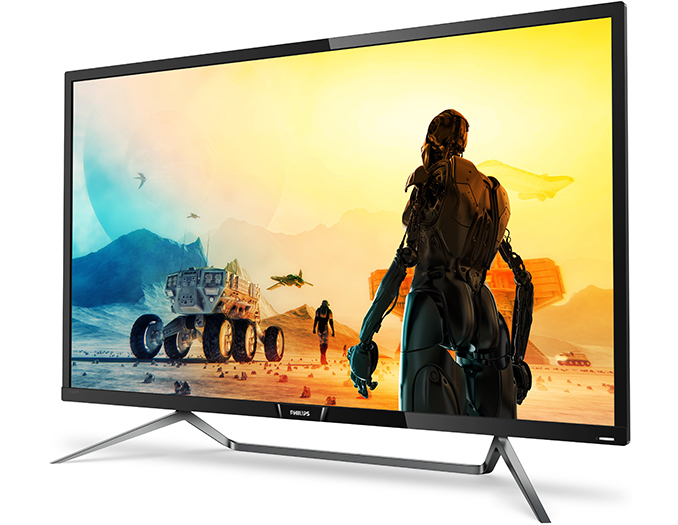
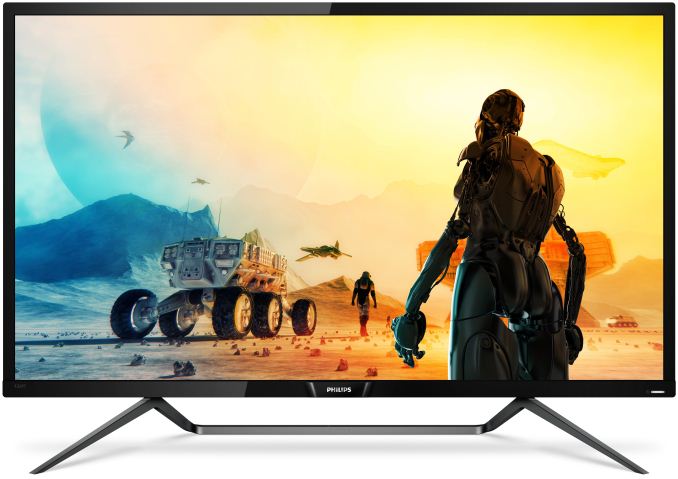
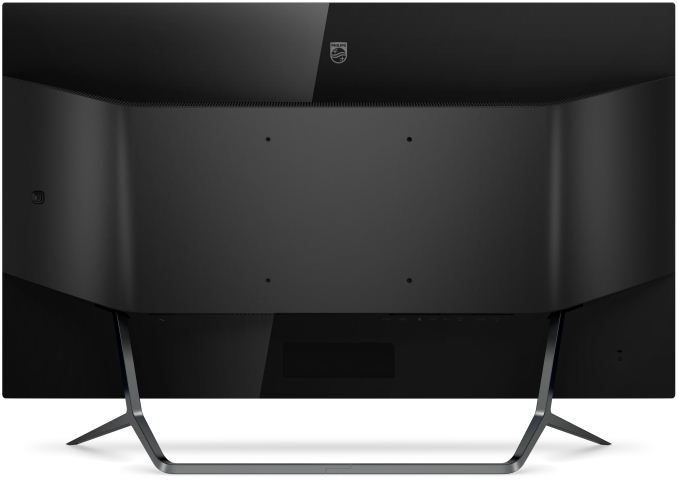
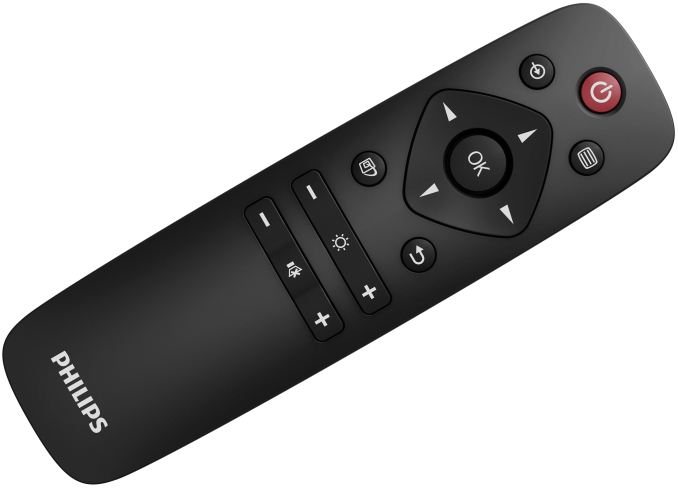

 Quote
Quote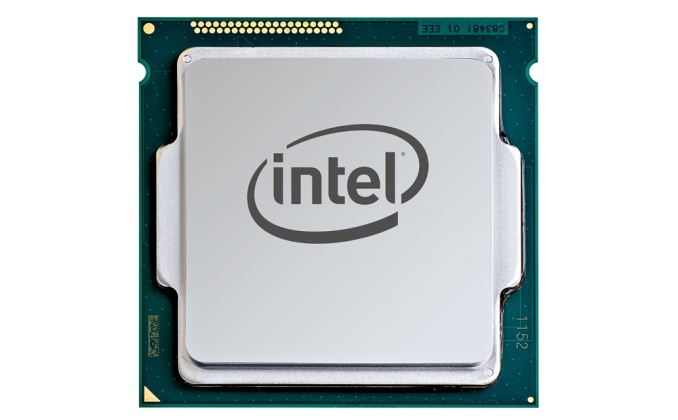
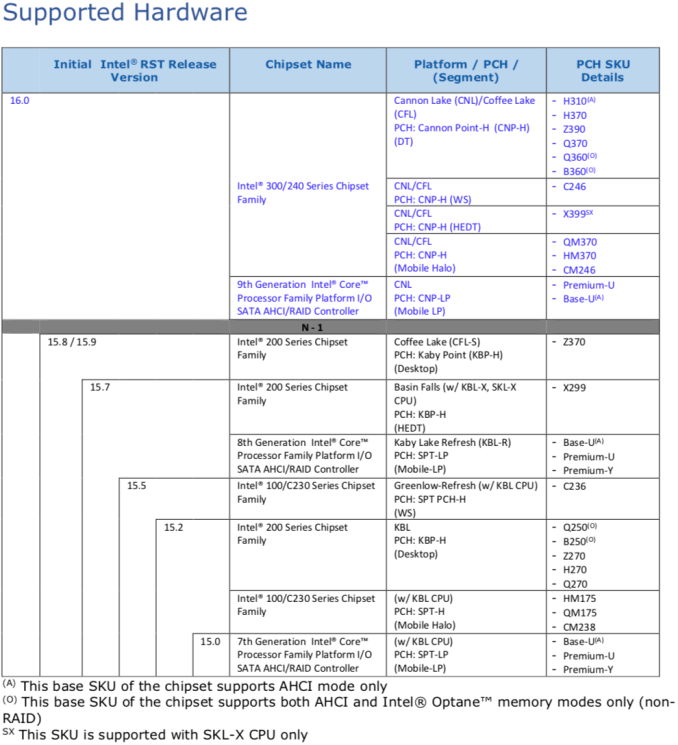

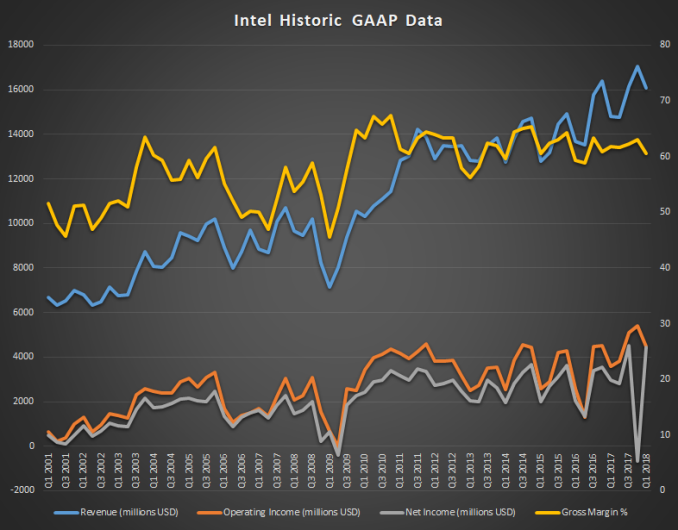
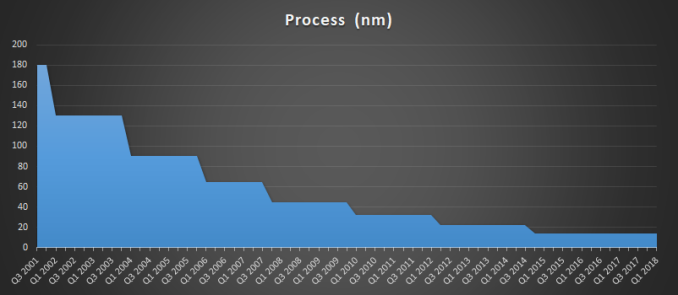
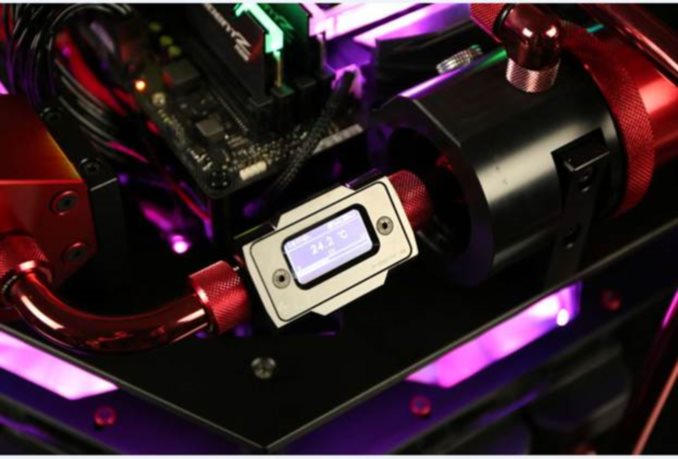
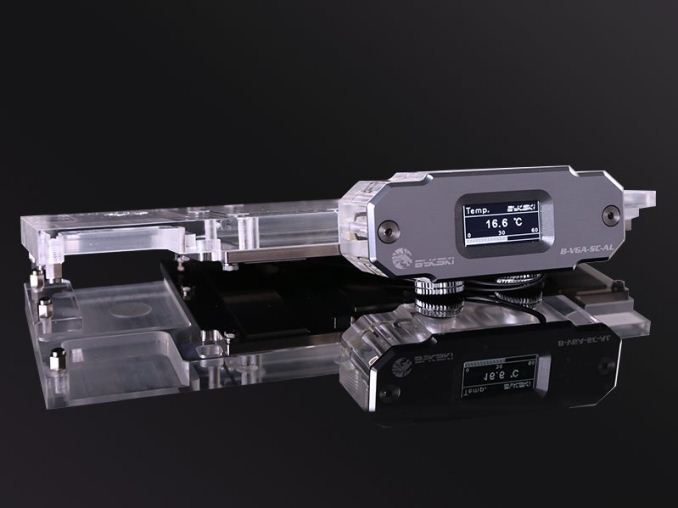

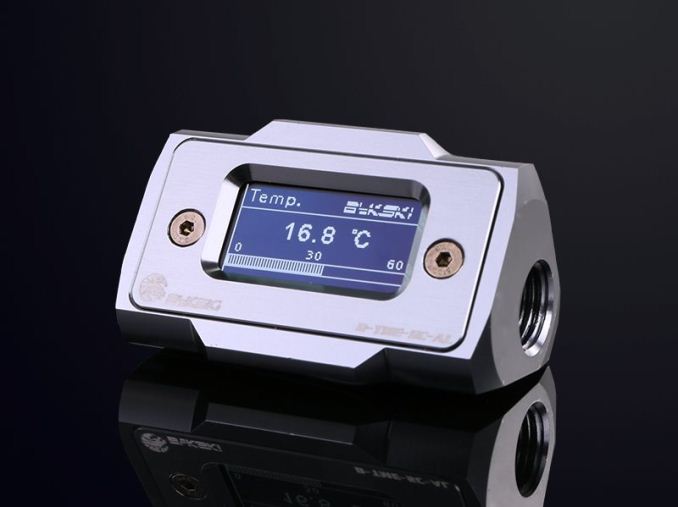
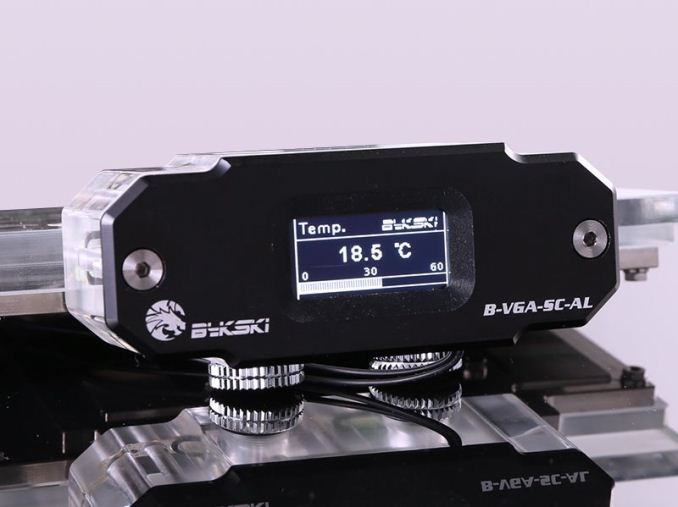
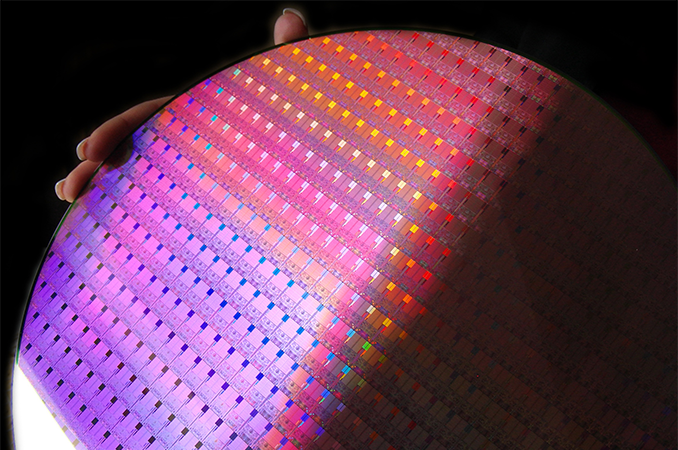
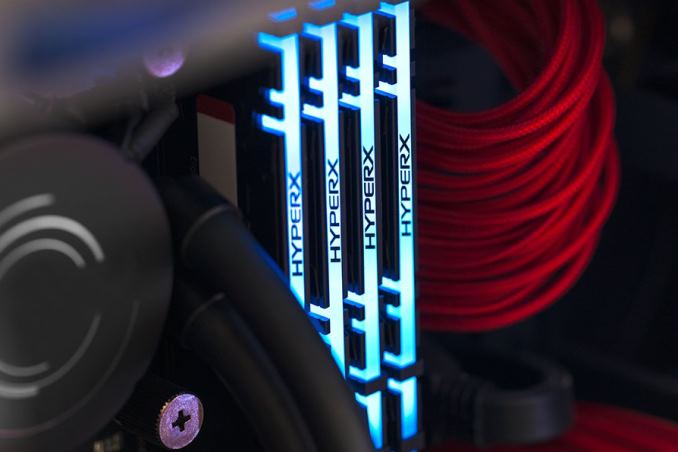
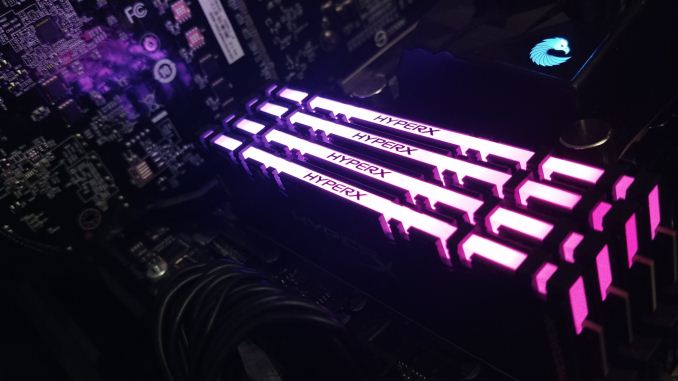
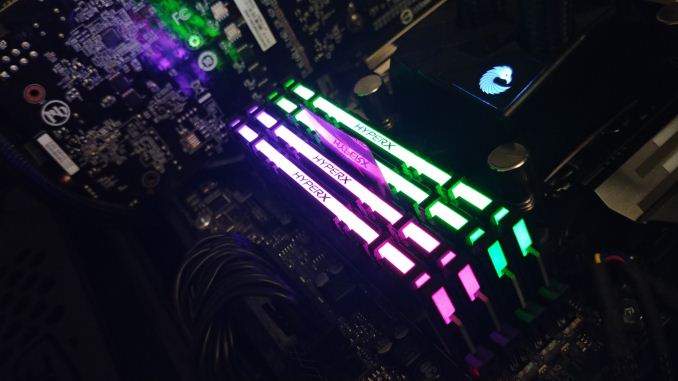
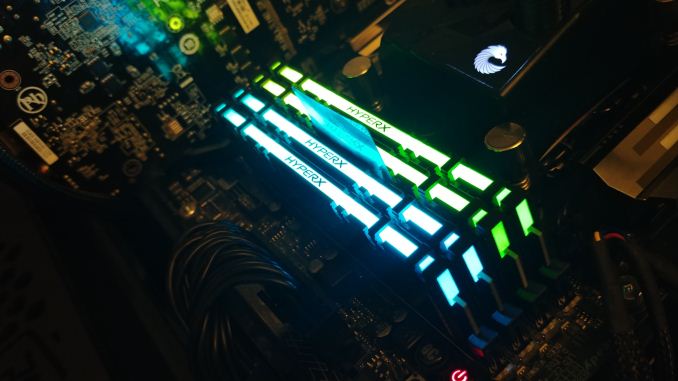
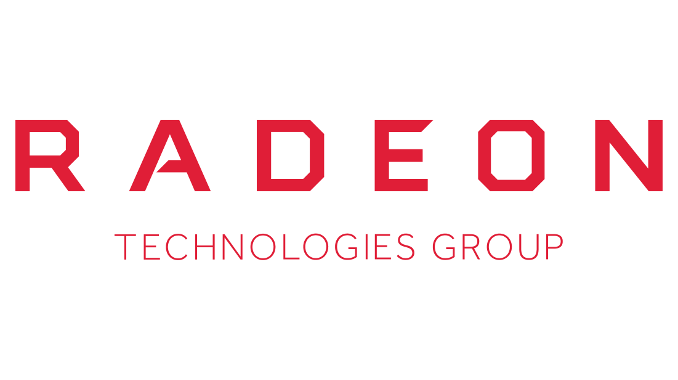
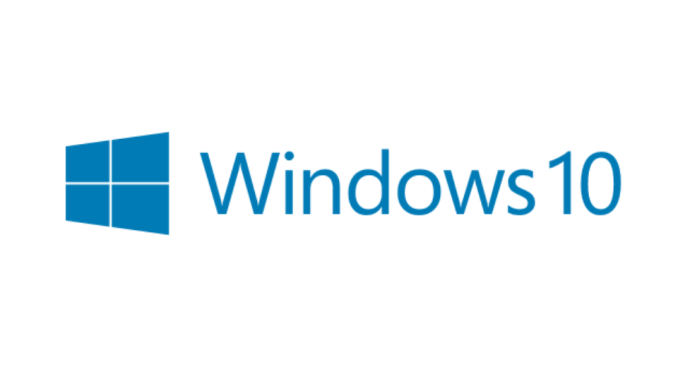

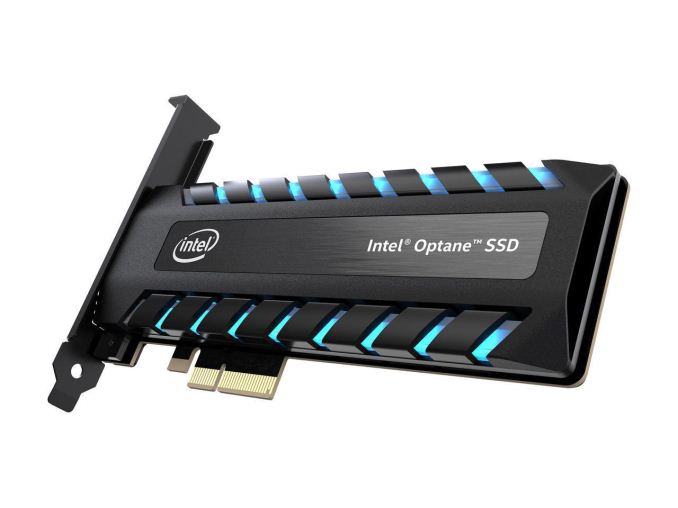
















Bookmarks